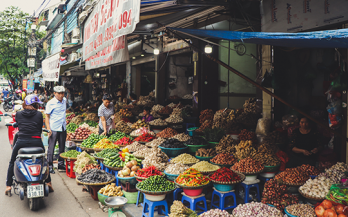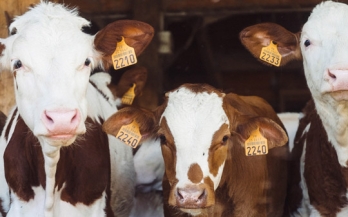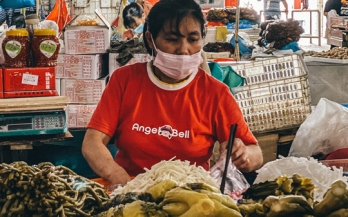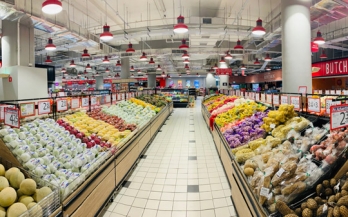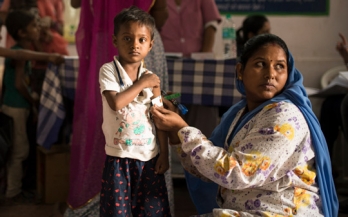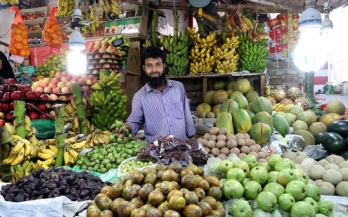As the wide-ranging effects of COVID-19 combine with serious pre-existing environmental, social, political and economic strains, our food systems find themselves under unprecedented pressure. The silver lining is that this uniquely challenging context has prompted renewed focus on finding scalable solutions to protect lives, livelihoods and our planet.
The COVID-19 pandemic has affected almost every aspect of life, including how food is distributed, purchased and consumed. In low-income countries, consumers have had to contend with higher food prices and less fresh, nutritious food available to eat. While the pandemic has had a devastating short-term impact on all those who rely on local food systems, it has also exposed their underlying fragility.
From empty supermarket shelves to vegetables thrown away uneaten due to shutdowns, COVID-19 has revealed many vulnerabilities in global and local food systems. Not only that, but the pandemic has also reminded us of the essential role nutrition and food security play in boosting immunity and resistance to disease.
World Food Safety day in 2020 falls during an ongoing pandemic that has sickened millions, killed hundreds of thousands and cost trillions of USD. The emergence of COVID-19 has been associated with wet or traditional markets, and there are many studies, reports and blogs on how it is affecting food systems.
Scares involving food contamination tend to make headlines when they occur in high-income countries. These rare outbreaks are all the more dramatic because consumers usually take for granted that the food they purchase will be safe: in high-income countries, governments have rigorous food safety standards with staff and budgets to support their enforcement, and many major retailers establish their own standards and procedures for ensuring that the food on their shelves is safe to eat.
As COVID-19 continues to impact millions of lives and jobs around the world, it is also making our global food system increasingly vulnerable. The poverty, malnutrition and food insecurity that were already challenges before the pandemic – with 820 million people chronically hungry in 2018 – are set to grow as a result of it.
On Tuesday 28 January 2020, the atmosphere at the Indonesian Ministry of Health felt different than usual. It was a very special day, as it marked the 60th National Nutrition Day. There was a lively and dynamic ambience at the Ministry of Health as the place was filled with visitors and the fantastic live performance of the marching band from Jakarta’s Madrasah Ibtidaiyah Negeri 16 school filled the air with great energy.
Since the Covid-19 pandemic and associated control measures began affecting food systems around the world, many of us who care about nutrition and livelihoods have been thinking anxiously about food prices: would they be affected? If so, how badly, for which foods, and for how long? Food prices are important for several reasons.
"Biblical". That was the word that the world’s press needed to (finally) run stories about the impacts of the COVID-19 crisis on food and nutrition. Thank you to the Executive Director of the World Food Programme, David Beasley, for the turn of phrase.
In a commendable move to combat the effects of COVID-19, the Government of Bangladesh has announced a bailout package to support Small and Medium Enterprises (SMEs) by partially covering their interest payments for the current fiscal year until 30th June 2020. But the eventual impact of COVID19 pandemic and its potentially devastating impact on food systems, especially on the SMEs that are the backbone of food supplies.



